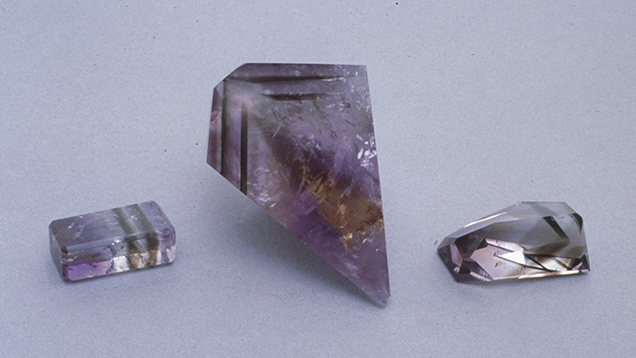Ametrine with Layers of Smoky Quartz

An investigation of these Yuruty mine samples by the present contributor revealed an interesting new aspect to this bicolored quartz. In addition to the typical amethyst and citrine sectors (along the major and minor rhombohedral forms; again, see Vasconcelos et al., 1994), five of the samples also showed a similar pattern of two distinct layers of smoky quartz. These layers are oriented parallel to the minor rhombohedral form z {011 – 1}, within the citrine sector (see, e.g., figure 4). In the slightly polished crystals, the smoky layers were observed just below the surface. In this area, the color of both amethyst and citrine is rather pale. The two (broken) fragments that did not show smoky quartz layers were presumably derived from the central portion of a crystal; they did display more intense amethyst/citrine coloration.
The growth conditions of this unusual ametrine evidently facilitated the enhanced accommodation of aluminum impurities in the z sectors. Natural irradiation of these aluminum-rich zones would give rise to the smoky quartz color layers.
Approximately 30 tons of material have been produced at the Yuruty mine since February 1999, according to Mr. Marancenbaum. Large quantities of rough and cut amethyst, citrine, and ametrine from this new mine were available at this year’s Tucson show, and he anticipated that about 10,000 carats of cut material monthly could be expected in the near future.



